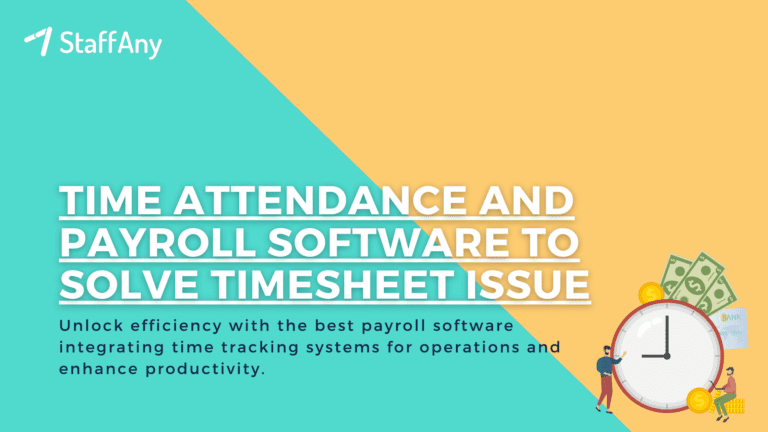Managing a team of employees can be a challenging task, particularly when it comes to scheduling shifts. Creating a shift roster can be a daunting process, but with the right tools and knowledge, it can be made simpler and more efficient.
In this article, we will cover the basics of how to make a shift roster, the importance of having an effective roster, and introduce a useful tool for managing employee scheduling. Let’s find out below!
What is a Shift Roster?

A shift roster is a schedule that outlines the shifts and duties of employees in a workplace. It is an essential part of workforce management as it ensures that a business has adequate staffing to meet its operational needs. Shift rosters can be created for various types of industries, including healthcare, hospitality, retail, and manufacturing.
In a shift roster, each employee is assigned to a specific shift and duties based on their skill set and availability. The roster usually includes details such as the start and end times of each shift, the number of employees required for each shift, and any necessary breaks or meal periods. Shift rosters can be created for a specific period, such as a week, a month, or a year, depending on the needs of the business.
Creating an effective shift roster can be challenging as it requires balancing the operational needs of the business with the availability and preferences of employees. A poorly designed shift roster can result in understaffed shifts, overworked employees, and decreased morale. Therefore, it is essential to have a clear understanding of the staffing requirements, the availability of employees, and any scheduling constraints when creating a shift roster.
Read more: How to Prepare Shift Roster Effectively with No Hassle in the F&B Industry
How to Make a Shift Roster

Creating an effective shift roster can be a complex task, but there are some key steps that can help simplify the process. Here are five important steps to consider when making a shift roster:
1. Determine Staffing Needs
Before creating a shift roster, it’s essential to determine the staffing needs of the business. This involves assessing the operational requirements for each shift, such as the number of employees required, the roles and responsibilities of each employee, and any necessary training or certification. It’s also important to consider any constraints or limitations, such as budgetary restrictions or regulatory requirements.
2. Identify Employee Availability
Once the staffing needs are established, the next step is to identify employee availability. This involves collecting information on the availability of each employee, such as their preferred shift times, days off, and any vacation or personal time they have requested. This information can be collected through surveys, employee feedback, or automated scheduling software.
3. Create a Draft Roster
Using the staffing needs and employee availability data, create a draft roster that assigns employees to specific shifts and duties. It’s important to consider factors such as fairness, equity, and the preferences of employees when creating the roster. This draft roster can then be reviewed and revised based on feedback from employees and operational requirements.
4. Finalise the Roster
After the draft roster has been reviewed and revised, finalise the roster and communicate it to employees. It’s important to ensure that employees have access to the roster and understand their assigned shifts and duties. Any necessary changes or updates should be communicated to employees in a timely manner.
5. Monitor and Adjust the Roster
Once the roster is in place, it’s important to monitor its effectiveness and adjust it as necessary. This involves tracking employee attendance, performance, and feedback, and making any necessary changes to the roster to ensure that it is meeting the operational needs of the business and the preferences of employees. It’s also important to regularly review and update the roster to account for any changes in staffing needs or employee availability.
Read more: Understanding Why Time Management is Important for Your Business
The Importance of Having an Effective Shift Roster

An effective shift roster is critical to the success of any business that relies on shift-based work. Here are five reasons why having an effective shift roster is essential:
1. Ensures Adequate Staffing
An effective shift roster ensures that there are enough employees scheduled for each shift to meet the operational needs of the business. By creating a shift roster that accounts for the necessary roles and staffing requirements, you can reduce the likelihood of staffing shortages. This ensures that each shift has the appropriate number of staff members, reducing the workload on individual employees and improving overall team efficiency.
2. Increases Employee Satisfaction
When employees have input into their schedules, they are more likely to be engaged and motivated at work. An effective shift roster takes into account the preferences and availability of employees, which can improve employee satisfaction and morale. When employees are satisfied with their schedules, they are less likely to call in sick or request time off, which can help reduce staffing shortages and related costs.
3. Reduces Overtime Costs
An effective shift roster can help to reduce overtime costs by ensuring that shifts are staffed appropriately. When employees are scheduled for shifts that align with their availability and preferences, they are less likely to request overtime. Additionally, by avoiding understaffing, businesses can reduce the need for employees to work overtime to cover shifts that are not adequately staffed.
4. Improves Customer Service
An effective shift roster can ensure that the right employees are scheduled for the right shifts, based on their skills and experience. This can lead to improved customer service and satisfaction, which is critical for businesses that rely on positive customer experiences. By scheduling employees with the necessary skills and experience for each shift, businesses can help ensure that customers receive high-quality service.
5. Increases Operational Efficiency
An effective shift roster can help to increase operational efficiency by ensuring that employees are scheduled for shifts that align with their skills and experience. This can result in increased productivity, decreased downtime, and improved overall team efficiency. By scheduling employees with the necessary skills and experience for each shift, businesses can reduce the time it takes to complete tasks and ensure that work is done correctly the first time, which can save time and resources. Additionally, by reducing understaffing and overstaffing, businesses can optimise labour costs and increase profitability.
Read more: 11 Factors to Consider When Scheduling Staff and Planning Your Roster
Getting to Know StaffAny: Your Shift Roster Solution
Creating a shift roster can be time-consuming and challenging, but with the right tool, it can be made much simpler. One such tool is StaffAny, a cloud-based employee scheduling software that simplifies the process of creating and managing shift rosters.
With StaffAny, you can easily create a shift roster by inputting the necessary roles and staffing requirements, employee availability, and any other scheduling constraints. In addition to creating shift rosters, StaffAny also includes features such as time and attendance tracking, real-time reports, and leave management. These features help to streamline the scheduling process and improve overall team efficiency.
Furthermore, StaffAny’s mobile app allows employees to view their schedules, request time off, and updates schedule, making it easier for them to manage their work schedules and balance their personal lives. Explore all of our features and see how StaffAny can help you create an effective shift roster that works for your business and your employees today!











